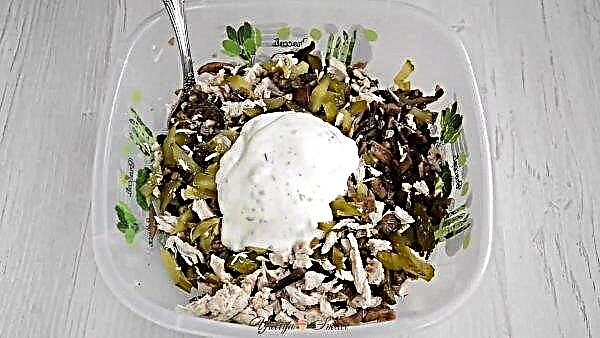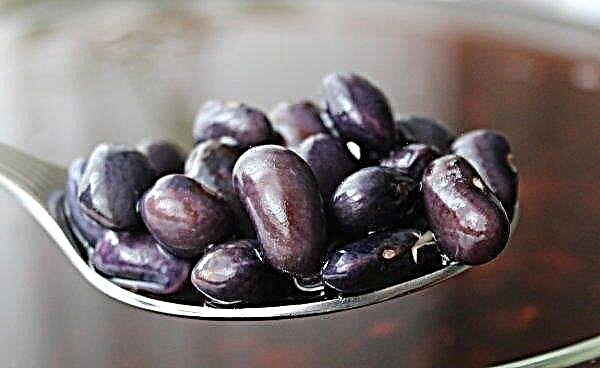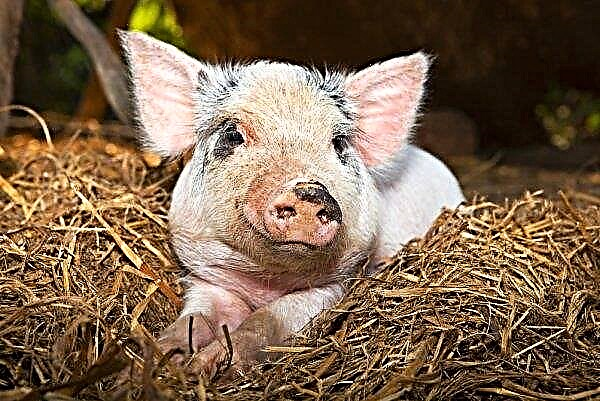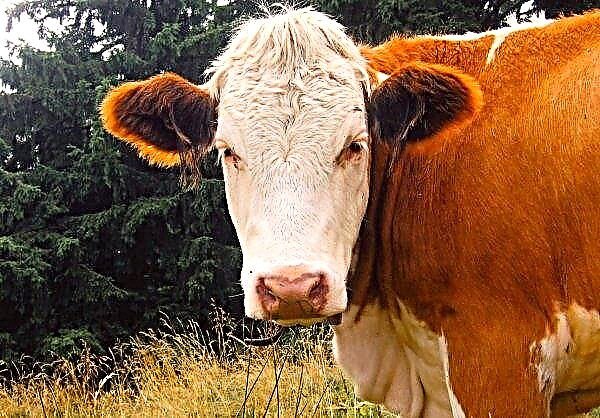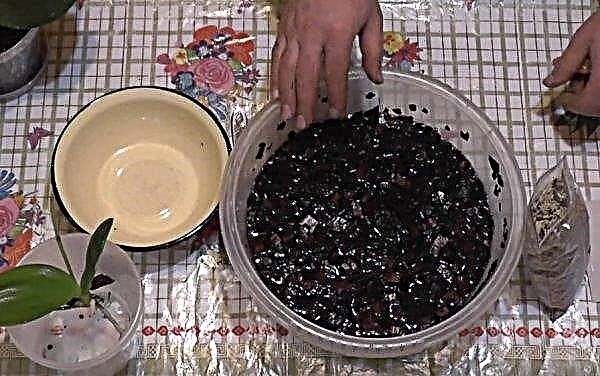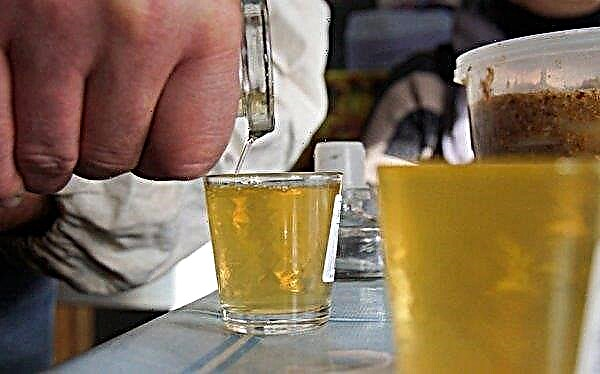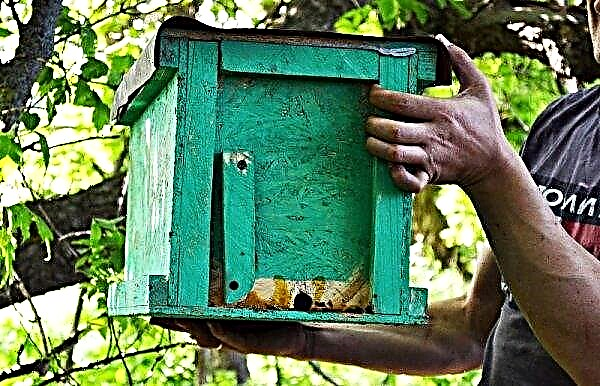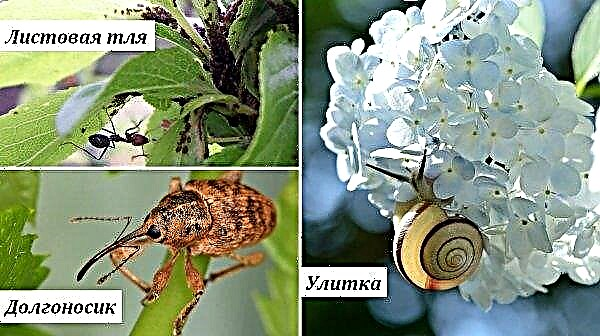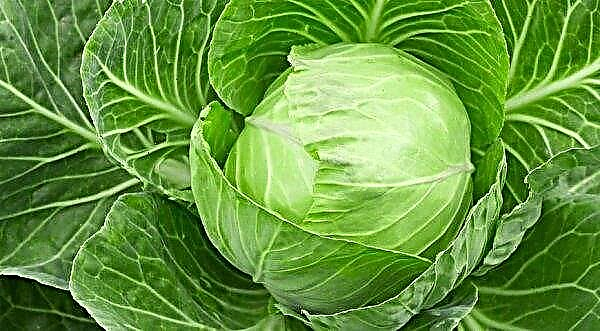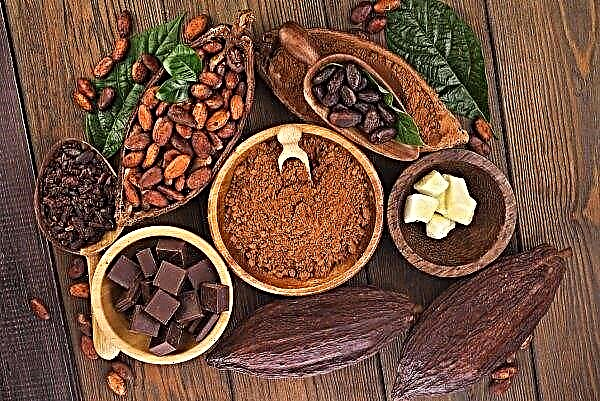Ficuses are known in indoor floriculture as beautiful and unpretentious plants, presented in the form of small trees. Today there are more than a dozen of their varieties, among which Daniel ficus occupies its place, the cultivation of which will be discussed in the article.
Botanical description of the plant
Often, this plant is called Benjamin ficus, which is justified, since Daniel is a species of it, with characteristic dark green elongated leaves, with pointed ends. More like a small tree than a flower or shrub, and the difference between the "brothers" is the color saturation of the leaf plates. They are located on flexible branches that extend from a vertically growing trunk.
Photo gallery
The leaf size of an adult plant is from 5 cm, on young specimens leaves grow no more than 2-4 cm long. In addition, the difference between the young and mature specimen is in color: the color of the foliage on the adult plants is darker. In the absence of forming pruning, the ficus Daniel reaches two meters in height.Did you know? Another species of ficus benjamin is Safari, which, unlike other species, has three-colored, spotted leaves. This feature makes it attractive for gardeners and designers.
House growing conditions
The first thing you should pay attention to growing ficus Daniel is the location of the pot, with the necessary conditions for the growth and development of the plant. This applies not only to lighting, but to temperature and humidity.
Seat selection
Ficus Daniel refers to the indoor vegetation that prefers bright lighting, but does not tolerate direct sunlight. This means that the window sill on the southeast, west or southwest side of the house or the area next to the window in such rooms will be the right place to place the flower pot. In the summer, the plant can be taken out to the balcony, the main thing is that in the afternoon it should not be exposed to solar activity and drafts. For additional protection from the cold, you can use a pan with a thick bottom, which will house a pot of ficus.
In the summer, the plant can be taken out to the balcony, the main thing is that in the afternoon it should not be exposed to solar activity and drafts. For additional protection from the cold, you can use a pan with a thick bottom, which will house a pot of ficus.
Temperature and humidity
The best temperature indicators for Daniel will be values within + 20 ... + 25 ° C in summer and not lower than + 15 ° C in winter. However, in winter, even when the indicators drop to + 16 ... + 15 ° C, it is advisable to cover the soil surface with polyethylene, opening only during rare moisturizing.
Important! When choosing soil for planting or transplanting ficus, give preference to light and nutritious substrates that will quickly pass water and absorb moisture well. Stagnant fluid, especially at low temperatures, threatens to rot the root system and death of the plant.
Home Care
Ficus Daniel requires standard care, with timely watering and fertilizing the soil. Do not forget that we are talking about a tall indoor plant, which at home needs pruning.
Watering
When developing an optimal irrigation scheme, it is advisable to focus on the drying rate of the upper soil layer, which will protect the plant from overflow. They bring in liquid when the soil dries out no less than 1–2 cm deep.
On average, this happens about 1–2 times a week in the summer and about 1 time in 14 days in the winter. If water accumulates in the ficus sump, it is better to pour it soon after watering, so as not to provoke the development of putrefactive processes. On hot days, to maintain humidity, the leaves are periodically sprayed with water, and once a month - they arrange a ficus with a warm shower. Both for irrigation and for spraying, it is desirable to use soft, warm and settled water.
On hot days, to maintain humidity, the leaves are periodically sprayed with water, and once a month - they arrange a ficus with a warm shower. Both for irrigation and for spraying, it is desirable to use soft, warm and settled water.Top dressing
Ficus needs nutrients all year round, but feeding is especially relevant during the growing season, which occurs from March to October. In the cold season, feeding is not done. Mineral and organic mixtures can be prepared as nutritional compounds.
Good options for nutritional mixtures are products of Agricola, Master-Agro, Pokon, although it is possible that in your region of residence you will find other, no less useful formulations.Important! If during the period of fertilizing the leaves on the ficus turn yellow, darken or fall off, it is advisable to stop the application of fertilizing or to choose other proportions.
Pruning
 Without growth restriction, Daniel's ficus can reach two meters in height, so forming pruning is necessary. It’s easy to work with the plant, because its flexible branches lend themselves to any effect, and with the joint planting of individual copies, you can achieve a beautiful plexus of their trunks.
Without growth restriction, Daniel's ficus can reach two meters in height, so forming pruning is necessary. It’s easy to work with the plant, because its flexible branches lend themselves to any effect, and with the joint planting of individual copies, you can achieve a beautiful plexus of their trunks.
It is better to shorten the shoots in spring, washing off the prominent milky juice. Often, the ficus quickly recovers after the procedure and forms new shoots just as quickly, which will be an advantage for those who want to get half-meter bonsai trees or other sculptural forms of living vegetation.
In creating the desired shape of the tree, additional support will help in the form of a wire frame or tension support systems that ensure the growth of shoots in the right direction.
Transfer
The first and one of the most important stages in the entire process of transplanting ficus Daniel is the selection of a suitable pot and the preparation of a nutritious and loose substrate. The flower container can be made of any material, the main thing is that it has drainage holes to remove excess moisture, and it is several centimeters larger than the previous one. A drainage layer made of expanded clay or crushed brick is always laid at the bottom of the pot, and a support is also established, especially when it comes to transplanting a young and unformed plant. The process itself is desirable to perform in the spring, clearly observing the following steps:
A drainage layer made of expanded clay or crushed brick is always laid at the bottom of the pot, and a support is also established, especially when it comes to transplanting a young and unformed plant. The process itself is desirable to perform in the spring, clearly observing the following steps:
- In a prepared pot with a laid out drainage layer, pour the soil mixture prepared from equal parts of sheet, sod land and half of coarse sand (it should fill the tank by about 1/3).
- Carefully remove the ficus from the old container and, without removing it from the entire earthen coma, place it in a new pot, sprinkling on top with the remaining amount of soil.
- Water the plant and transfer it to a suitable place for further growth and development (over the next few weeks it will require the most gentle care, with control of temperature conditions and the level of lighting).
 The frequency of such transplants will depend on the growth rate of the ficus: if you notice that the roots make their way into the drainage hole of the pot or completely braid the earthen lump - it’s time to buy a new flower pot and move the plant. Also, a transplant will be required for recently purchased ficus in a shipping container, during which the “empty” substrate can be changed to a high-quality nutrient mixture. If the purchased specimen is already growing in such a nutrient soil, then you can not rush to transplant, at least for the next few months.
The frequency of such transplants will depend on the growth rate of the ficus: if you notice that the roots make their way into the drainage hole of the pot or completely braid the earthen lump - it’s time to buy a new flower pot and move the plant. Also, a transplant will be required for recently purchased ficus in a shipping container, during which the “empty” substrate can be changed to a high-quality nutrient mixture. If the purchased specimen is already growing in such a nutrient soil, then you can not rush to transplant, at least for the next few months.Did you know? Our usual indoor ficus came from giant trees growing in the jungle of India. Their trunks grow up to 30 m in height, and the leaves have a length of about 1 m, so one such plant creates a shadow on a plot of 300 m².
Propagation at home
Ficus Daniel is propagated in several ways: by cuttings, aerial layering and seeds. Each of them has its own characteristics.
- Cuttings - provides for the rooting of the cut apical process of the mother plant, on which buds and leaves should be present. Juice arriving during cutting must be immediately removed, after which the finished stalk can only be placed in water for further rooting. A water change is performed at least once every 2 days, over the next 2-3 weeks (this is how long rooting takes). As soon as strong roots appear on the handle, it is transplanted into the soil for further cultivation.
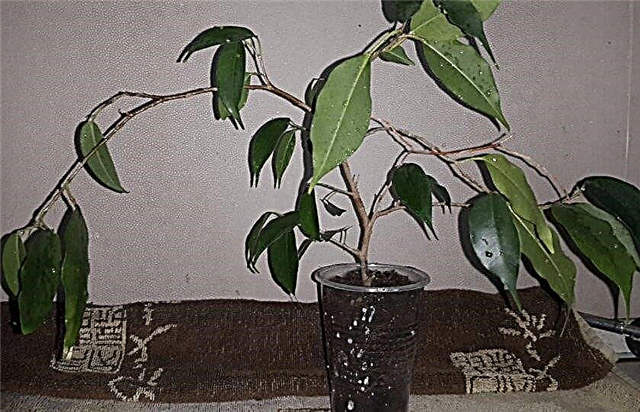
- Layering. You will need a strong and healthy mother plant, from which you need to get an almost completely lignified shoot: the edge of the bark on the selected part is carefully cut with a sharp knife, and then removed. At the cut point, the stalk is treated with a growth stimulant, wrapped in sphagnum and additionally wrapped with a plastic film. The cut points should remain moist, and then after 3-4 weeks, new roots will appear on them. After this, the layering can be separated from the mother plant and planted in the soil.
- The seeds. After preliminary soaking in a growth stimulator, the seed is sown in the prepared soil mixture (to a depth of not more than 1 cm) and covered with a plastic wrap.
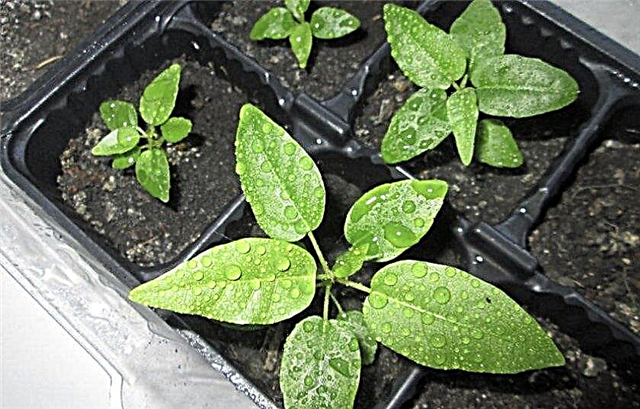 Boxes with seedlings are carried out in a warm and well-lit area of the apartment, with further maintenance of the required temperature and humidity. The first shoots appear in a few weeks, and after 10-14 days they can be planted in different pots.
Boxes with seedlings are carried out in a warm and well-lit area of the apartment, with further maintenance of the required temperature and humidity. The first shoots appear in a few weeks, and after 10-14 days they can be planted in different pots.
Important! Do not rush to throw extra seedlings. Not all seedlings will be able to gain a foothold in a new place after a transplant, and you will have to replace the marriage.
Possible growing difficulties
When growing ficus Daniel, the grower may encounter difficulties due to violations of the rules of care or the activity of pathogens and insects, for example:
- Leaf falling due to excessive soil moisture and further acidification of the soil. Also, do not exclude the possibility of exposure to low temperatures or the introduction of an excessive amount of nutrient compounds. Revision of your actions will help to solve the problem.
- Drying of the tips and yellowing of individual sections of the sheet plate. The reason is to look for dry air. After increasing humidity, the problem will be solved.
- The appearance of spots on the leaves due to prolonged exposure to the sun. Highly visible light areas are burns left by direct sunlight. Shade the plant in the afternoon or move the pot deep into the room.
- Shredding young leaves or their stunting indicates a lack of nutrients, so it is better for the grower to change the fertilizer, or increase its dosage.
- Stagnant moisture in the pot often contributes to the development of the fungus, due to which the ficus weakens and loses its leaves. Fungal ailments can be manifested by mold, dark spots, gray or dark soot deposits on any part of the plant.
 Common common fungal ailments of ficus Daniel include:
Common common fungal ailments of ficus Daniel include:
- gray rot;
- soot fungus;
- leaf fungus;
- root rot.
Check out the features of growing these types of ficus:
Do not forget about the possible pests of indoor vegetation, among which Daniel aphids, scabies, mealybug, and spider mites are especially scary. To begin with, in the fight against them, you can use a mild soap solution and washing the leaves under a warm shower, but if there are too many pests, then you will not be able to do without systemic insecticidal compounds, and it is better to purchase preparations like Aktellik or Akara in advance. Unfortunately, any houseplant is at risk of disease or pest invasion, but if you create ficus Daniel comfortable conditions for growth and development, while ensuring proper care, then there will be no problems with it. He will always delight you with a magnificent crown and attractive figures after a shaping haircut. In addition, ficus is famous for its purifying abilities and the ability to rid the home of bad energy, and this is another reason for growing them in your home.
Unfortunately, any houseplant is at risk of disease or pest invasion, but if you create ficus Daniel comfortable conditions for growth and development, while ensuring proper care, then there will be no problems with it. He will always delight you with a magnificent crown and attractive figures after a shaping haircut. In addition, ficus is famous for its purifying abilities and the ability to rid the home of bad energy, and this is another reason for growing them in your home.


 Boxes with seedlings are carried out in a warm and well-lit area of the apartment, with further maintenance of the required temperature and humidity. The first shoots appear in a few weeks, and after 10-14 days they can be planted in different pots.
Boxes with seedlings are carried out in a warm and well-lit area of the apartment, with further maintenance of the required temperature and humidity. The first shoots appear in a few weeks, and after 10-14 days they can be planted in different pots.